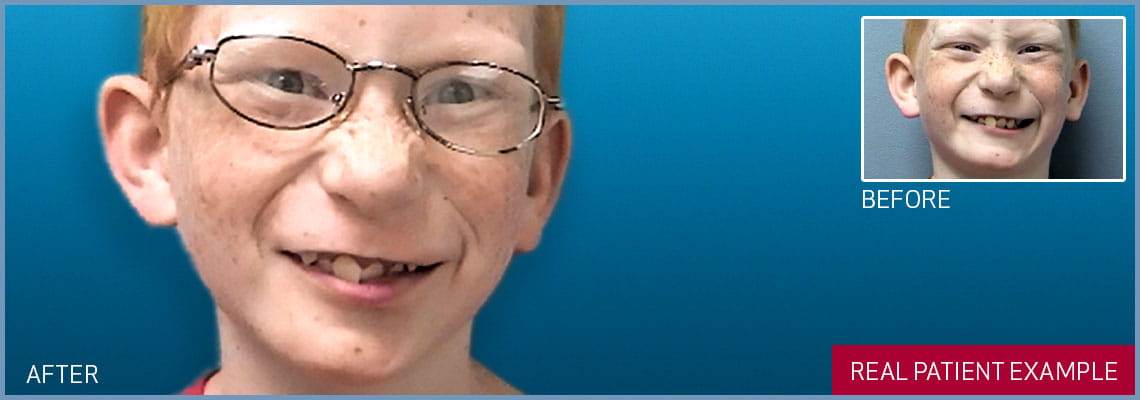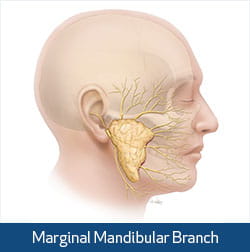Myectomy

Myectomy, or removal of functioning muscle, can be a relatively simple yet effective method for improving facial symmetry and achieving a refined result. Myectomy is frequently used to help balance an asymmetric lower lip.
During a full smile, the muscles of the upper lip retract upward partially exposing the top teeth. At the same time, the muscles of the lower lip work in the opposite direction to produce slight depression of the lower lip partially revealing the bottom teeth. It is the loss of lip depression that is frequently responsible for subtle smile imbalances.
During a full smile, the muscles of the upper lip retract upward partially exposing the top teeth. At the same time, the muscles of the lower lip work in the opposite direction to produce slight depression of the lower lip partially revealing the bottom teeth. It is the loss of lip depression that is frequently responsible for subtle smile imbalances.

The marginal mandibular branch of the facial nerve is responsible for controlling the muscles of the lower lip and sometimes is damaged during cosmetic or tumor surgery. Alternately, it may fail to develop in utero or be damaged during the birth process.
Following a partial recovery from unilateral facial paralysis, the function of the unaffected side of the face may appear hyperactive. Selective weakening of muscles on the overactive appearing (unaffected) side of the face can help restore more balanced facial motion. Additionally, the weak, stretched out facial muscles on the previously paralyzed side of the face can be shortened or tightened in an effort to enhance symmetry.
Following a partial recovery from unilateral facial paralysis, the function of the unaffected side of the face may appear hyperactive. Selective weakening of muscles on the overactive appearing (unaffected) side of the face can help restore more balanced facial motion. Additionally, the weak, stretched out facial muscles on the previously paralyzed side of the face can be shortened or tightened in an effort to enhance symmetry.
Technique
The effects of surgery can be simulated in the clinic by injecting local anesthesia into the desired muscle group, producing a temporary weakness that lasts one to two hours. Similarly, a more prolonged trial can be obtained by injecting Botox that has a comparable effect of 3 to 6 months in duration.
If the individual is satisfied with the improvement in symmetry produced by injection of local anesthesia or Botox, the effect can be made permanent during a short outpatient procedure.
Surgery to balance the lower lip is performed through incisions inside the mouth avoiding the creation of external scars. Segments of the lip depressor muscles are removed on the normal side (myectomy) to produce a more harmonious smile.
Asymmetry produced by hyperactive lip elevating muscles is usually approached through an incision camouflaged in the natural crease that runs from the base of the nostril to the corner of the mouth (nasolabial fold).
Utilizing this approach small segments of over active muscle are removed from the normal side in an effort to improve facial balance. Facial symmetry may also be enhanced by shortening and tightening the facial muscles on the weak side through a similar incision.
Recovery
Muscle reduction procedures are usually performed on an outpatient basis. A single overnight stay may be required when the surgery involves multiple sites or is combined with additional procedures. When incisions are created inside the mouth patients are kept on a clear liquid diet for 48-72 hours followed by a soft diet for 2 to 3 weeks.
Initially, frequent rinsing with special mouth wash is required. Patients are asked to avoid heavy lifting, exercise, tooth brushing and pressure to the surgical site until instructed by their surgeon. The full effect of the surgery usually becomes apparent in several weeks as the post-operative swelling resolves. The results of surgical myectomy are usually permanent, however, sometimes the weakened facial muscles will regain some strength requiring repeat surgery or further management with Botox.
LOWER LIP PARALYSIS TREATMENT

Left lower lip myectomy
real patient case studies
Learn how facial paralysis surgery and functional restoration can help you.
